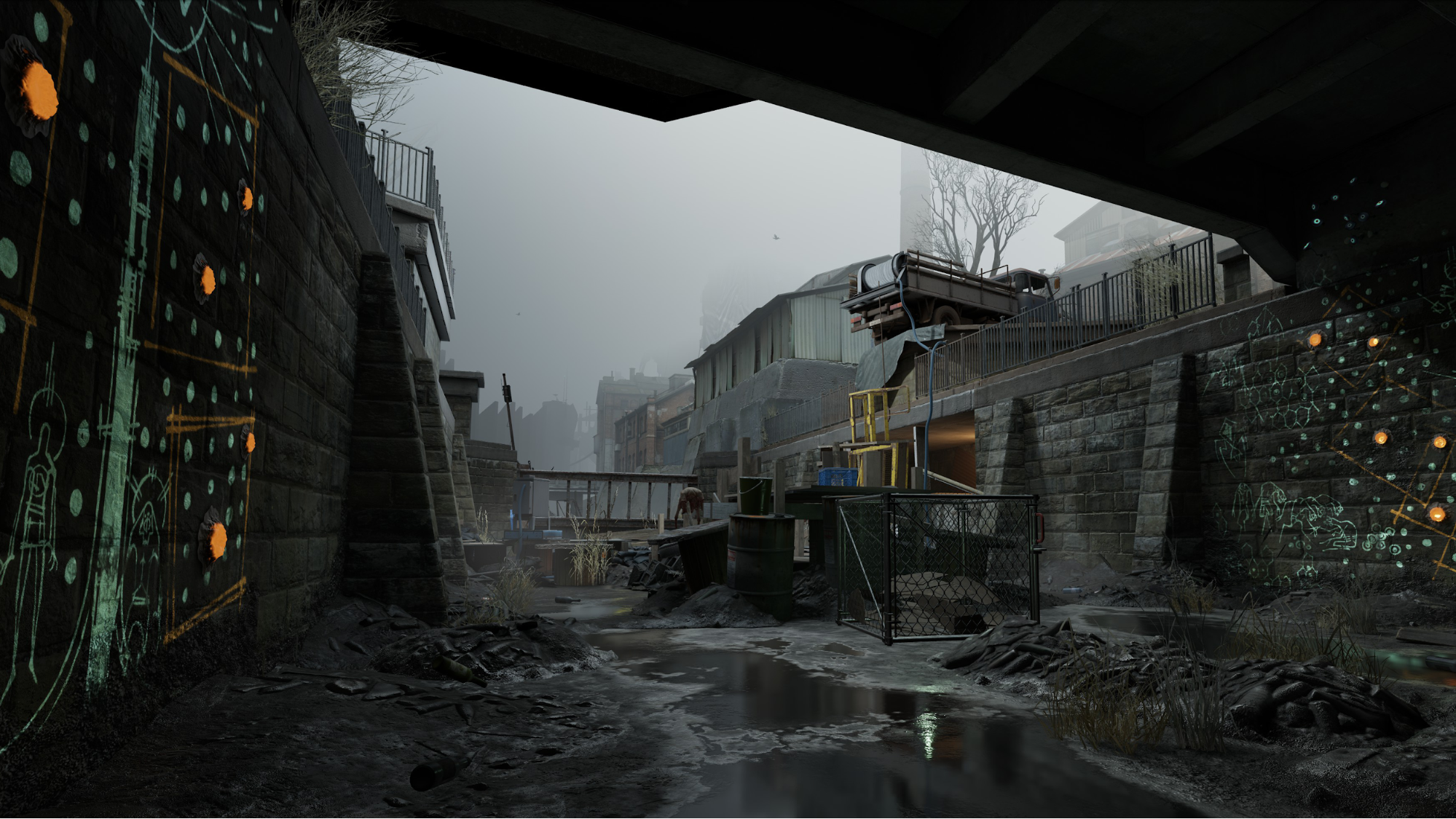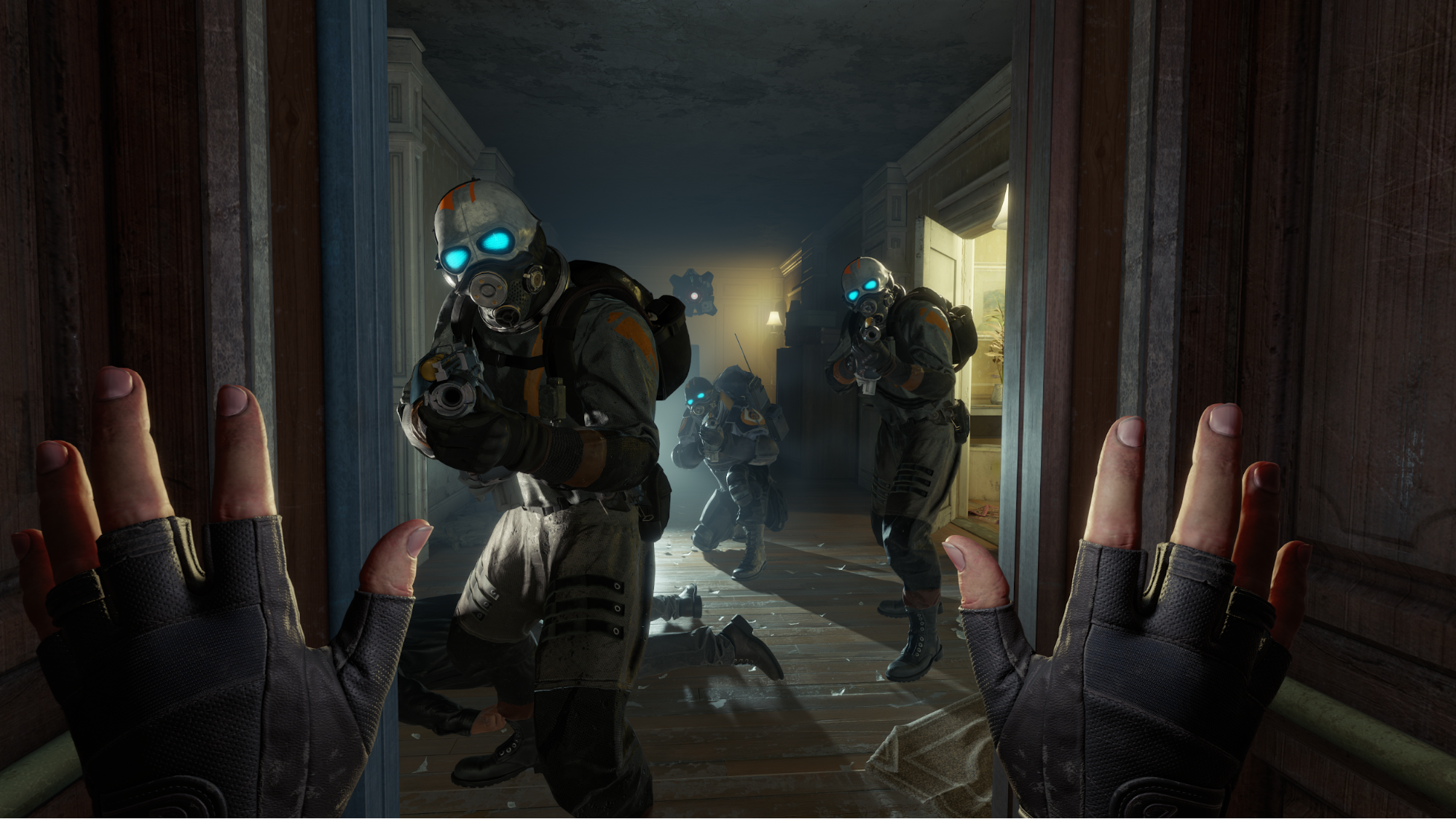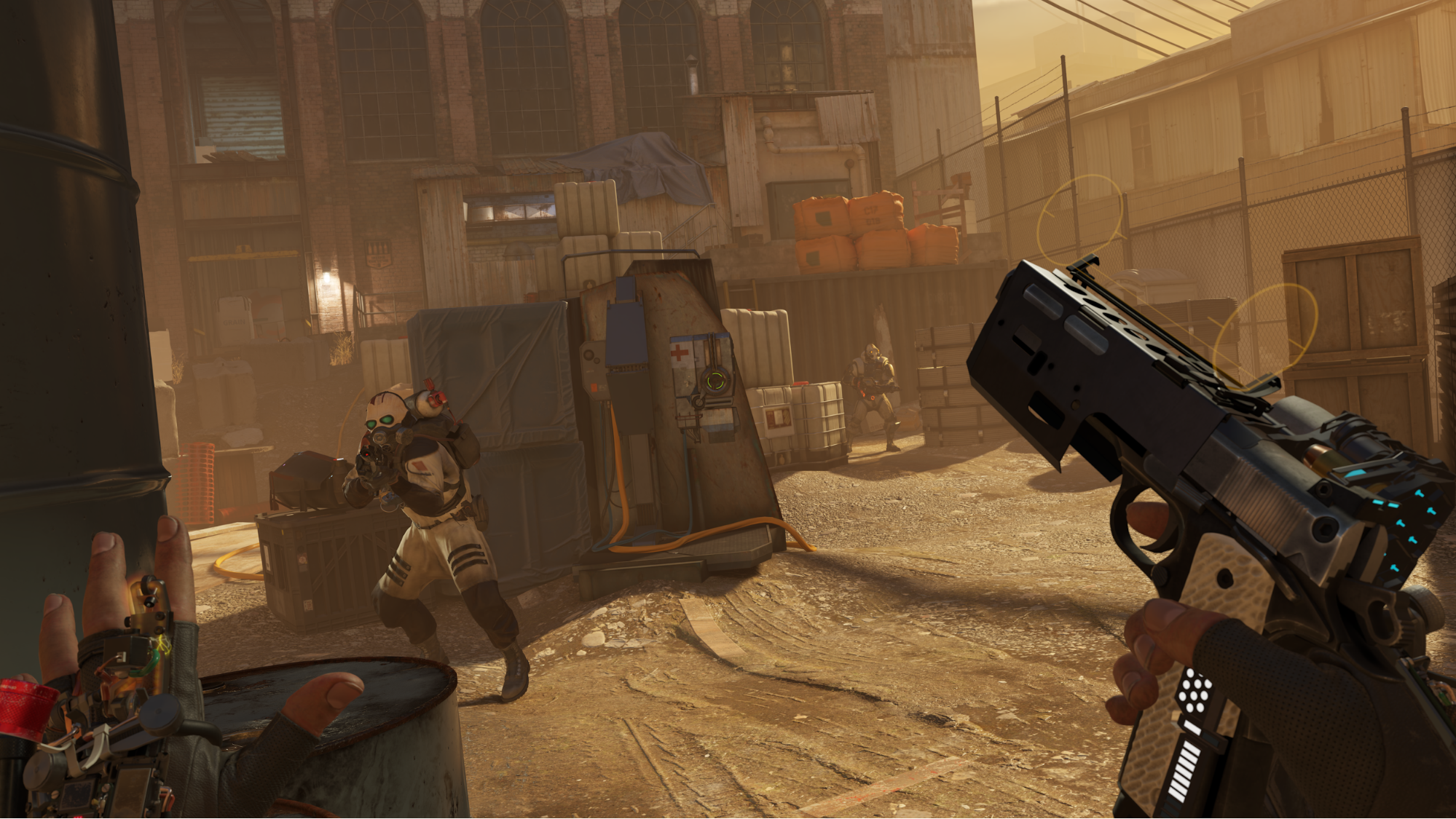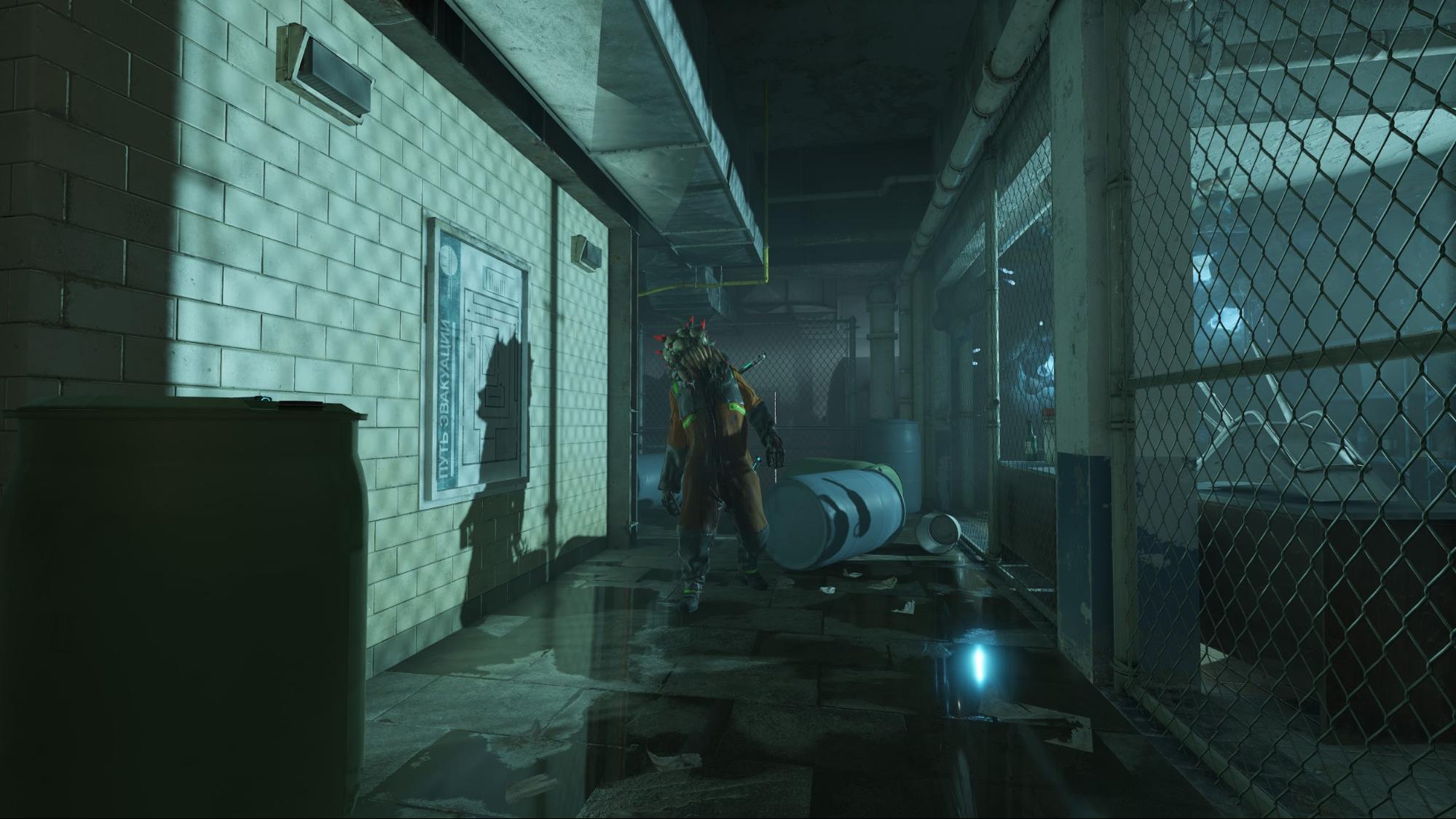Tom's Hardware Verdict
Half-Life: Alyx is one of the best VR games you can get right now. It has a deep story and characters with personality. This is a game that you could sink some real time into and has all the trappings of a proper AAA title.
Pros
- +
Excellent graphics
- +
Compatible with all VR headsets
- +
Accessibility options
- +
Polished mechanics
Cons
- -
Half-Life fans without VR miss out
- -
Headcrabs are terrifying
- -
Too expensive
Why you can trust Tom's Hardware
Half-Life: Alyx has been a long time coming. As a fan of the Half-Life series since 1998, this is a day that I thought would never happen. Half-Life: Alyx ($60 on Steam)adds a new chapter to the franchise, and you’ll want to grab your best VR headset to enjoy it. This time it’s all in VR, which is a perfect fit for a series known for pushing the limits of gaming technology.
Half-Life: Alyx once takes full advantage of new technology. Valve has been deeply involved in the creation of the VR industry for close to a decade and is finally ready to push that new medium to new levels. It released the Valve Index VR headset last year, and with it, the company promised a flagship game, which it later revealed to be Half-Life: Alyx.
The Half-Life series has always moved that needle forward in game development. The first instalment has been regarded as one of the greatest video games of all time, and it fundamentally altered how first-person shooter (FPS) games were created.
Half-Life 2 introduced Valve’s Source engine, which went on to become the foundation of many games—some of which are still played today. The Source foisted new graphics, animation, AI, physics, audio and narration technologies upon the industry that are still used today.Half-Life 2: Episode One brought new lighting features and new facial animation techniques and was the first game that Valve distributed directly through its now ubiquitous Steam platform.
Today, we have Half Life: Alyx, a polished and well thought out addition. From the controls, to the graphics and especially the sound. This is one of the best VR games available.
Half Life: Alyx Minimum System Requirements
| Operating System | Windows 10 | Row 0 - Cell 2 |
| CPU | Intel Core i5-7500 / AMD Ryzen 5 1600 | Row 1 - Cell 2 |
| RAM | 12GB | Row 2 - Cell 2 |
| Graphics Card | Nvidia GeForce GTX 1060 / AMD Radeon RX 580 (GB) | Row 3 - Cell 2 |
Controller Support
Half-Life: Alyx does use some of the hardware features of the Index controllers, such as the capsense capabilities, to help animate your in-game fingers. However, you don’t lose out on anything practical by going with different controller inputs. Even the original Vive controllers work great.
Interactions, such as pressing the microphone button, are triggered by automatic animations. Any time you bring your hand close to a button, your middle, ring and pinky finger will curl in and leave your index finger out to press the button. The interaction is so natural that I didn’t even realize it was automatic at first.
Get Tom's Hardware's best news and in-depth reviews, straight to your inbox.
The button mapping of each controller type differs slightly, but Valve did its best to stay consistent, despite the dramatic differences in varying controllers’ layouts. For the Index controllers, the trigger button interacts with menus and weapons, the thumbstick is used for movement (more on that later) and the B button brings up the game’s pause menu. To pick up objects, you must squeeze the grip.
Both versions of Oculus Touch controllers have the same button mapping as the Index controllers. Thumbstick for movement, Y button (in the same place as the left B on Index controllers) and the grip button for grabbing.
HTC’s Vive controllers don’t include as many buttons, so Valve had to improvise somewhat. On these controllers, the grip button brings up the pause menu—the trigger button doubles as the grab button in this configuration.
Half-Life: Alyx also supports the HTC Vive Cosmos controllers, but support for those controllers was not ready in time for us to test them to learn the button mapping. We were told the launch-day build of the game includes Cosmos controller profiles.
Locomotion Options
In addition to supporting a wide range of controller inputs, Half-Life: Alyx also supports a variety of locomotion methods. You can play the game in seated, standing or room-scale configurations, and each one supports blink (teleport that can rotate), shift (teleport with no rotation), continuous (standard thumbstick movement) and continuous hand, which uses the thumbstick to accelerate and your hand position for direction.
No matter your preferred movement method in VR games, Valve’s got your back. I found that the best configuration for doing short benchmarks was a standing setup with Blink enabled. However, the seated position allowed me to play for a much longer session. For a game that has 15 hours or storyline, it might be best to settle into your favourite chair before diving deep into the story.
I wanted to enjoy continuous locomotion, but I found that the movement is a little bit too slow. I felt like I was moving through the world at a laggard pace. Blink locomotion felt fast and helped you get away from enemies much quicker.
Welcome to City17
The moment the game loaded, I was taken aback by the level of detail in Half-Life: Alyx. Virtual reality games have always been immersive, believable experiences, but this is on a new level entirely. I never felt like I was standing in a living world in a VR game before entering Half-Life: Alyx. The attention to detail here is absolutely staggering.
The first thing you see as the game begins is the towering Citadel standing tall over what appears to be a European neighborhood. The details of the balcony I was standing on immediately caught my attention, and I spent the first minute or two, slack-jawed, just taking in the sights.
When I finally snapped out of it, I made my way up the staircase beside me, only to find more incredible details to distract my progress. In front of an array of screens, I saw a radio. I reached out with my finger and pressed the button down to find myself face-to-face with Eli Vance.
As incredible as it was to have a video chat with someone from my gaming past, I soon found a new distraction to capture my attention. Next to the video chat console, I noticed a diagram scribbled on the window in dry-erase marker. Then, I spotted a pile of markers and an eraser, and I couldn’t help but wonder if I could use them. To my absolute glee, they worked! I could scribble on the window and erase what was there.
It was at that moment that I knew Half-Life: Alyx is a VR game like none other. I was pulled away from the core game many times to stop and take in the scenery. Half-Life: Alyx will be a treat for anyone who loves to explore and loves when developers pay attention to the minute details that don’t affect the gameplay directly but help make the environment feel like a real place.
Everything Is Physics-Based
It should come as no surprise to anyone who is familiar with Half-Life that the environment and objects in Half-Life: Alyx are physics-based assets. When you reach out to grab an object, your virtual hands latch on to it. When you toss a brick (yes, you can pick up bricks), it bounces off of the walls and tumble across the ground.
Enemies and corpses are also physics-based objects, meaning that dead enemies can get in your way. You can grab them and move them when necessary, and when you do, you’ll notice that corpses seem to have weight to them. You can’t feel the weight on your arms, of course, but you can tell when an object is substantial by the way it responds to picking it up.
Collectible items, such as ammo, weapons and health stimulus, are also physics-based items. You’ll find supply crates on shelves and in offices that, like all Half-Life games, you must smash to access their contents.
You will also need to hone your scavenging skills to succeed in this game. You won’t find stockpiles of ammo. You’ll be more likely to find a couple of shotgun shells or a single pistol clip than a crate full of ammo. As such, make sure to keep your eyes open and check every shelf, box, and inside every desk. And while you’re searching for ammo, you’ll want to keep your eyes open for resin pucks, the game’s currency which allows you to upgrade your weapon as you progress through the game. From time to time, you will stumble upon a weapon’s upgrade machine. These are few and far between, so be thorough in your search for resin or you may find yourself short of money when you need it.
Grabity Gloves
The primary tool that you will use in Half-Life: Alyx is a prototype device called the Russels, but a more appropriate name would be the grabity gloves. Like the gravity gun from Half-Life 2, the grabity gloves allow you to pick up things from afar. The gravity gun works with all sorts of heavy objects, whereas the grabity gloves don’t make you stronger; they just give you a form of force grab.
When you see an object that you would be able to pick up, like an ammo clip or a syringe, you can latch onto them from a distance and, with the flick of your wrist, pull the item towards you. It’s almost like having an invisible fishing line to yank things towards you. The gloves also support minor upgrades, such as a flashlight attachment .
Alyx also carries a device that she calls a multi-tool. This contraption helps you hack into combined equipment, such as weapon upgrade pods. It also allows you to hack into the electrical grid to disable electric fences and open secured doors.
Toss Your Stuff Over Your Shoulder
The Inventory system in Half-Life: Alyx is interesting and imaginative. Ammo and resin are stored in a backpack. To stash a clip or a resin fragment, just reach over your shoulder and drop the item. To retrieve a clip, reach over your shoulder into the bag and grab one.
You grabity gloves also contain two wrist pouches that allow you to stash health syringes and cartridges for the charging stations. Each wrist can hold one item.
Weapons have a different storage system. When you depress the touchpad, a virtual menu pops up displaying your stored arms, multi-tool and an empty hand. Move your hand to what you desire and then release the trackpad button to switch between weapons rapidly.
What? No Crowbar?
The Half-Life series has always included a crowbar as a melee weapon, but as far as I can tell, Alyx doesn’t carry one. This game is all about gunplay.
The first gun that you receive is a basic handgun. It does the job, but it’s nothing special. As you upgrade the weapon, it becomes much better for taking out headcrabs and zombies. The first upgrade is a reflex sight that makes it much easier to keep your aim accurate.
The next gun you’ll find is a weird hybrid between a pistol and a shotgun. The barrel cracks forward to open the chamber where you load your shells. The chamber accepts only two rounds, which makes fights with more than two zombies very challenging, especially because reloading isn’t just a matter of hitting a single button like it used to be. Now, you need to press a button to release the clip or open the barrel, reach behind your back to grab some ammo from your bag, and then place it into your weapon. With the handgun, you must then press a button to chamber a bullet. With the shotgun, you must pull a slide down the barrel to ready the weapon.
Doing all of that in the heat of an encounter with a pack of headcrabs or a cluster of zombies coming at you can be an intense experience. Which leads me to my next point:
This Game Is Scary!
Half-Life: Alyx isn’t like other Half-Life games. This series has always included aliens and zombies, but I don’t think anyone would put Half-Life on a list of scary games. That is not the case for Half-Life: Alyx.
It’s one thing to visit Gordan Freeman’s world through the portal of a computer screen. It’s a completely different experience to have a headcrab lunge at you and latch on to your face. And exploring a dark corridor with alien overgrowth on the walls with nothing but the light of a flashlight is quite alarming.
Don’t even get me started about how much I panicked the first time a barnacle snatched me and started pulling me up to eat me for lunch. It’s moments like this when you learn the value of always keeping ammo in your gun.
Accessibility Was a Priority
I recently spoke to Jason Mitchell and Chris Remo, two developers at Valve, who worked on the Half-Life: Alyx project. They told me that accessibility, including allowing for different controllers and locomotion options (see dedicated sections above) has always been a priority during the development of the game. Despite making the game exclusively a VR title, Valve put in great effort to enable as many people to play the game as possible by supporting all VR platforms.
Valve could have built Half-Life: Alyx to require the advanced features of the company’s Index controllers, but instead, it focused on building mechanics that would work on any VR controller. According to Mitchell, from day one, the development team had been using a mixture of Oculus, HTC Vive and Windows Mixed Reality (MR) devices to ensure every interaction would work well on each device. The game was in development for quite a while before Index hardware was available to the team for experimenting.
Can’t Stand? Only One Hand? No Problem!
In addition to supporting a wide range of controller inputs and locomotion options. Valve also spent time developing control options for people with limited ambulatory ability. You can enable stand and crouch inputs, which are helpful for people who can’t stand (or prefer to sit) while playing.
Valve even developed a single-handed mode to make the game accessible to people who don’t have full use of both their hands. In single-handed mode, you must use blink or shift locomotion. You don’t get the options for continuous movement.
Kevin Carbotte is a contributing writer for Tom's Hardware who primarily covers VR and AR hardware. He has been writing for us for more than four years.





